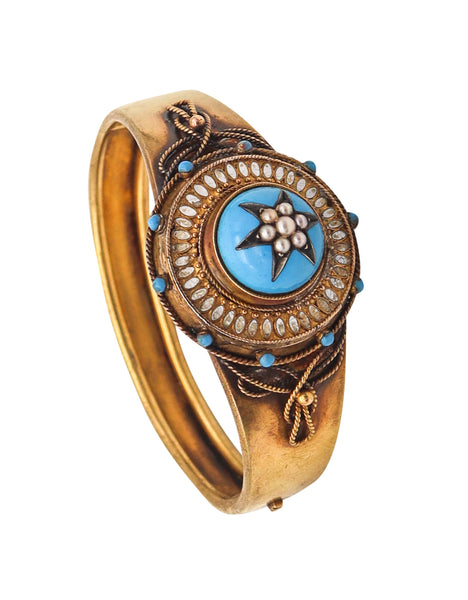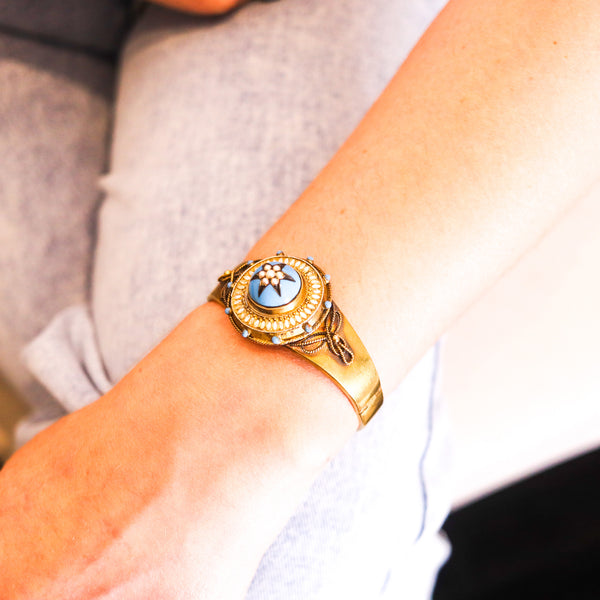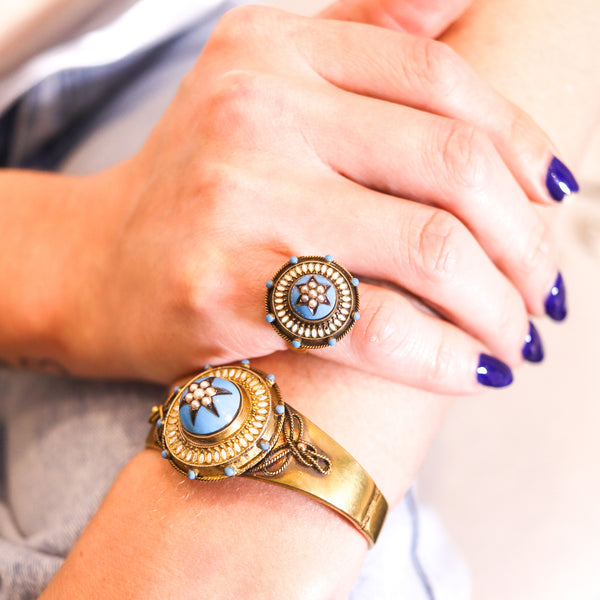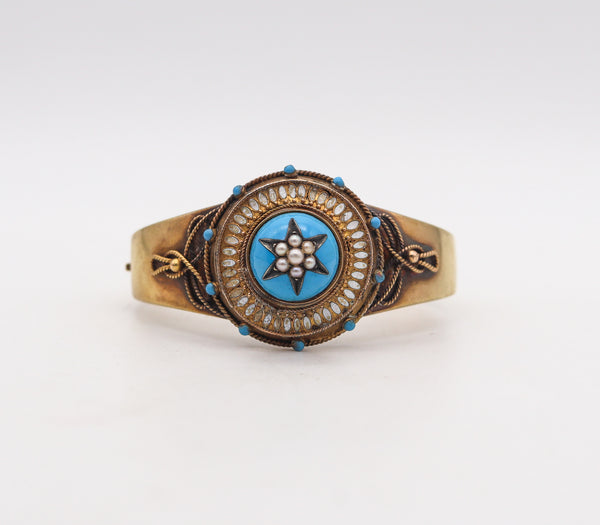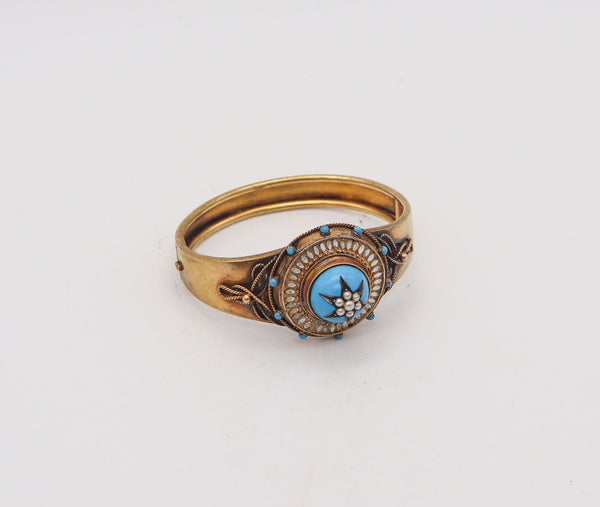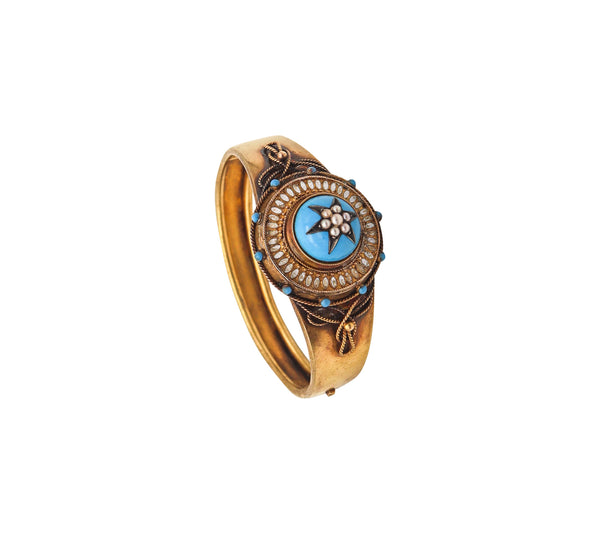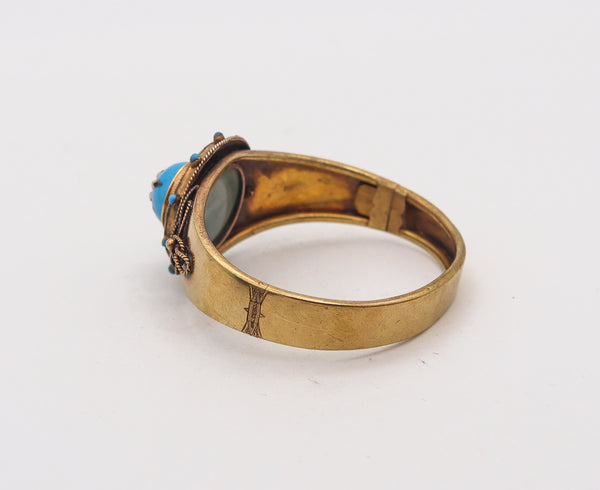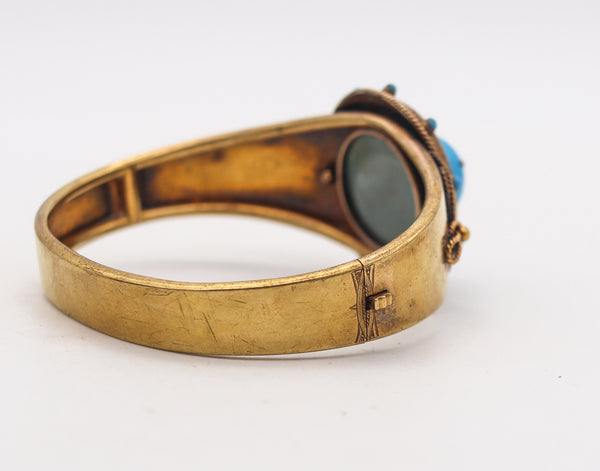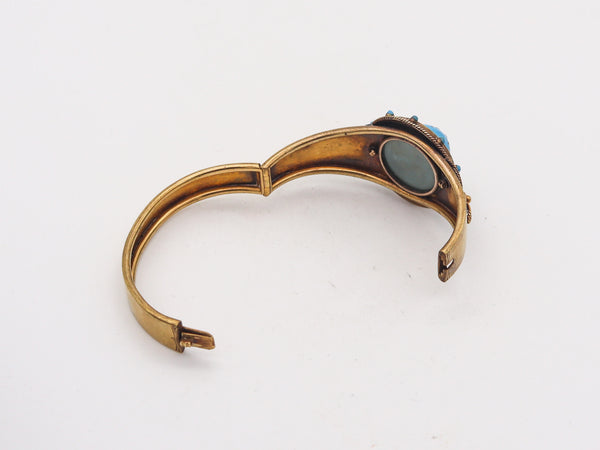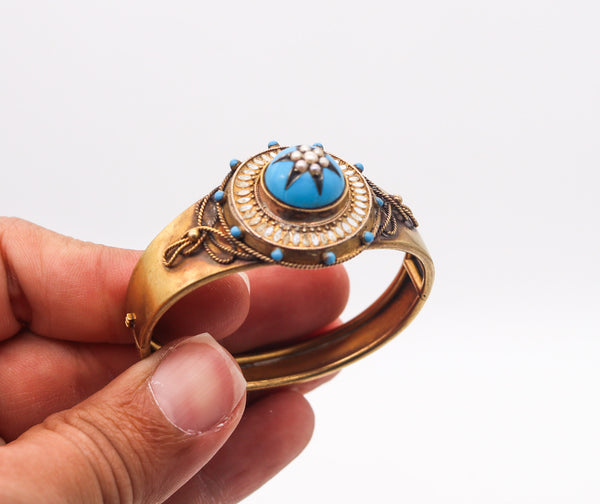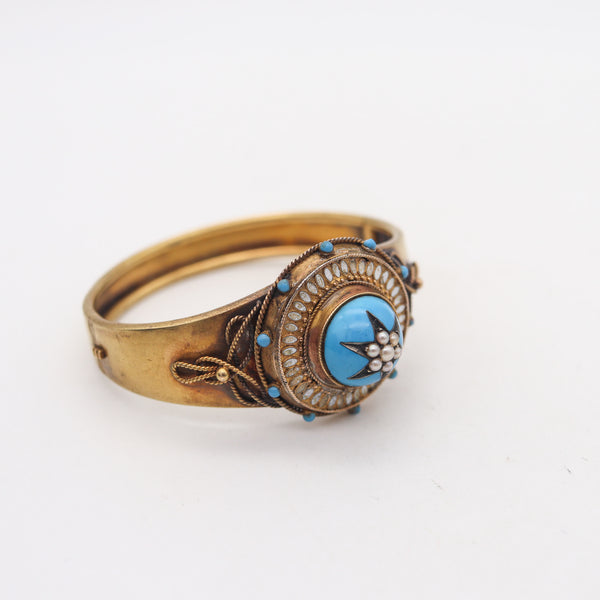-Victorian 1870 Etruscan Revival Celestial Star Bangle Bracelet In 15Kt Gold With Pearls
Victorian Etruscan Revival celestial star bracelet.
Very rare bracelet of a celestial star highly decorated, created in England during the Victorian Era (1837-1901), back in the 1870 This fabulous bangle bracelet has been carefully crafted in solid yellow gold of 15 karats with an exceptional craftsmanship showing intricate woven wires and geometric patterns of Etruscan revival which are embellished with applications of blue and white enamel. Fitted with a discrete security push lock.
Celestial Jewelry
Jewelry with celestial themes like moons, stars, constellations, and zodiacs invokes joy and magic, and are associated with love, luck, and protection. As with the Lunar New Year, the Lunar New Year has incorporated celestial elements like crescent moons, shooting stars, and constellations into its designs.
An History Of Love
It is very interesting to note that on the back, under the main piece, there is a secret round locket-type compartment with a frame holding a thin crystal. The purpose was to place portraits or memories of the loved one, the lover or fiancé. Bright blue were favored color to show love to a lady in a discreet way. Turquoise color, being the color of "love", was an indispensable attribute for any wedding in ancient periods. A well-known belief says that the turquoise color in a ring that a man receives from his beloved is always light blue.
Pearls: Mounted in inlaid settings, with 7 halves rounds white pearls.
Birthstone: Pearls for the month of June.
Weight: 23.60 Grams, (15.13 Dwt).
Size: Fit a wrist up to 6.65 Inches (16.9 Cm).
Measurements: The widest part is 31 mm (1.22 Inch) and raise 15 mm over the wrist.
Hallmarks: No marks, electronically tested for gold.
The Victorian Jewelry
This era is one of the most influenced and influential periods of antique jewelry. This period is defined by the British monarch, in this case, Alexandrina Victoria, the Queen of the United Kingdom of Great Britain and Ireland, as well as the Empress of India, years 1837-1901. There are 3 sub-periods within this era. First, the early, Romantic period, which is soaked in traditions, natural motifs in gold and silver, clear stones only being worn during the day and colored gems by night. The second being the Grand or mourning period, which coincides with the death of Queen Victoria's husband, Prince Albert the consort, who died in December of 1861. This period included large, dark, somber, dramatic jewelry, with a lot of black onyx, jet wood, amethyst, garnet and gold. This lasted until 1880's, when the aesthetic period of jewelry began. The Late or third stage of the Victorian period, use more complex and feminine motifs, returning to the natural, including many floral and celestial designs, with more decadent gemstones, lasting until the turn of the century. The Victorian era of jewelry includes many movements found in other countries, including revivals such as the Etruscan the Roman and the Egyptian as well as the Art Nouveau, Liberty style and Arts and Crafts design movements which lead into the beginning of the twentieth century.
History Of Revival Jewelry
Between the 1820 and 1890, ancient cities were discovered, such as Troy, Pompeii and Alexandria. Archaeological excavations in Egypt, Greece and Rome, discovered artistic pieces of these ancient cultures. These fabulous discoveries, stimulated cultural trips to these countries, popularly called "grand tour". Being the case that the enthusiast visitors bring back small objects, like souvenirs to be assembled into jewelry. The starting point of these trips were in the cities of Rome and Venice. this is why the craftsmen of these cities created small and interesting objects with ancient characteristics like this piece. The styles from the renaissance and Middle Ages, begun in the 1850’s, The Renaissance and Egyptian revivals were joined by a classical revival of Greek and Etruscan styles to conform a new aesthetic. As a result of the construction work on the Suez Canal in the mid-1860’s and the Egyptian excavations of Auguste Mariette and the resultant exhibit of Egyptian treasures at the exposition Universelle in 1867, a fascination for all things Egyptian and ancient cultures developed.
Note: We are offering in our other listing the matching ring en suite to this bracelet.
Collateral: This bracelet is accompanied by a presentation jewelry box.
Condition: The overall condition of this bracelet is excellent. Beside the little normal wear, there is no damage to the gold. All gemstones, are secured in the settings. This piece has been carefully inspected to guarantee the condition and authenticity.
INVENTORY REF: B030724AONM/.4424












